
Android 15 has finally been integrated into the Android Open Source Project, indicating that users can soon expect device manufacturers to roll out a stable Android 15 update. This new version is set to debut for Pixel devices in October, featuring numerous enhancements, especially in terms of security, along with several new and useful features. If you’re looking to stay informed on what’s new, here’s a detailed list of all the new functionalities in Android 15.
To assist you in navigating these features, we’ve categorized them into those currently available in Android 15 and those expected in future updates, as Google occasionally enables features through server-side switches. Below are the features available right now in Android 15.
1. Private Space
Private Space is a feature that became accessible with the Android 15 Beta 2 update. It acts as a secure vault for your apps that you prefer to keep private. This feature works by establishing a separate Private Space profile on your device, which effectively conceals sensitive apps. This profile remains inactive as long as your phone is locked.
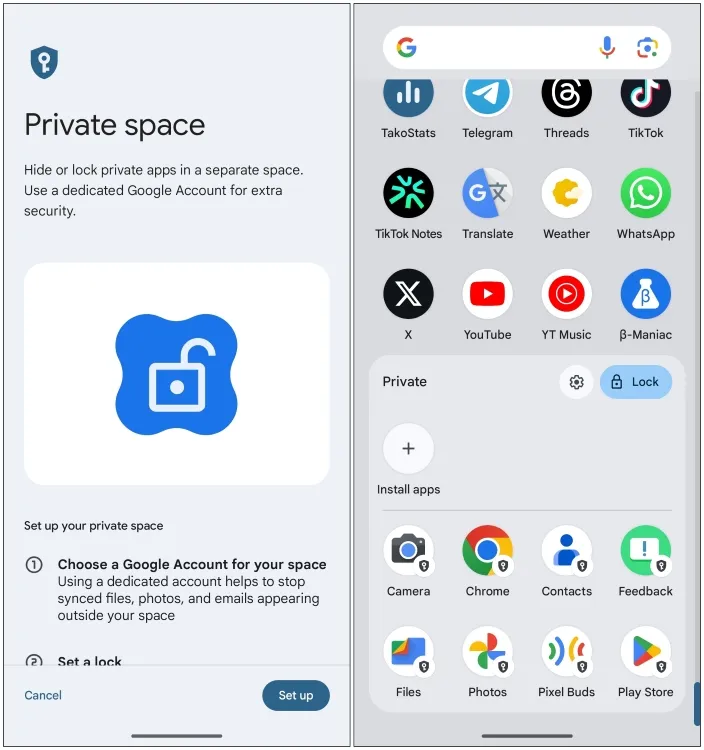
To utilize this feature, navigate to Settings > Security and Privacy > Private Space. After setup, a dedicated Private Space section will appear in the app launcher, accessible only via biometric or password authentication.
2. Notification Cooldown
Notification Cooldown is arguably one of the most beneficial additions to Android recently. Receiving multiple notifications from a single app can lead to incessant notification sounds, which can be quite irritating. This feature addresses the issue by gradually reducing the volume for subsequent notifications from the same app.

You can enable this feature by going to Settings -> Notifications -> Notification Cooldown. Options include applying it to all notifications, conversations, or opting not to use the cooldown.
3. New Keyboard and Brightness Haptics Options
There’s no need to mess around with third-party keyboard settings to disable keypress vibrations anymore. Android 15 introduces a toggle for users to turn off keyboard vibrations. While this may not seem monumental, it’s a significant quality-of-life enhancement since most third-party Android keyboards come with vibrations on by default.
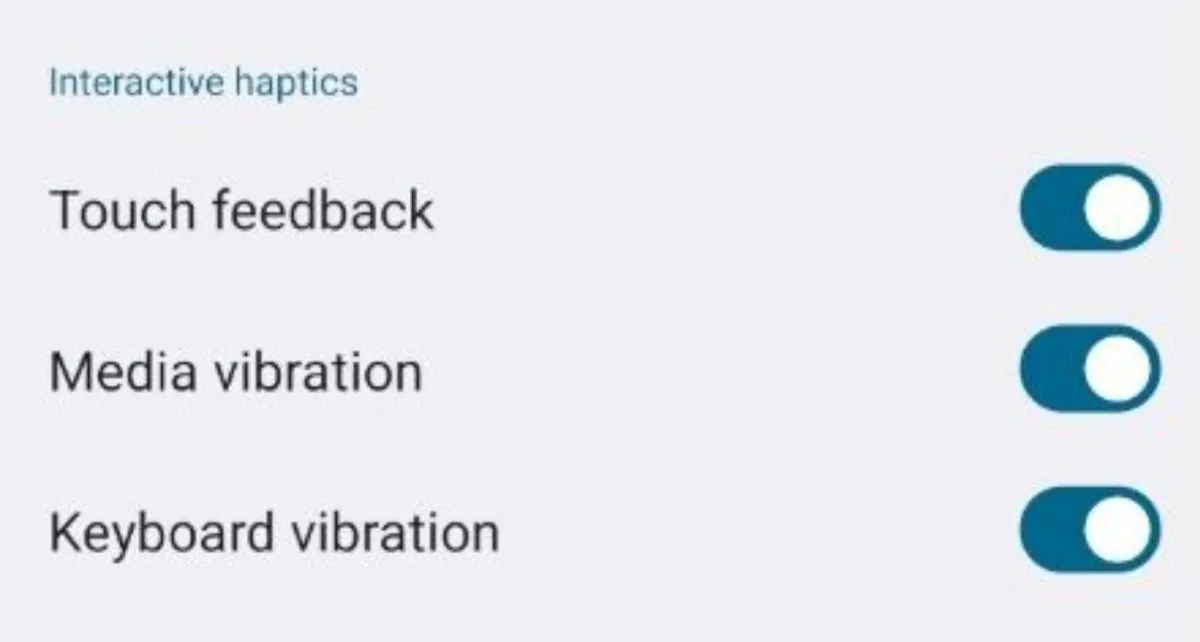
Additionally, Android 15 provides haptic feedback when adjusting the brightness slider through Quick Settings, a feature that has transitioned from testing to full functionality.
4. Custom Vibrations for Notification Channels
Android 15 also enhances notification customization by allowing users to assign custom vibration patterns for various notification channels. This means you can have distinct vibration patterns for different notifications from the same app, making it easier to recognize which notification you’ve received just by the vibrations.
5. Split Screen App Pairs
Google has finally recognized the needs of large-screen devices and foldables with a new feature known as App Pairs. This feature allows you to create and add shortcuts for two app pairs that you want to launch in split-screen mode. This functionality is particularly useful since it saves you the hassle of launching both apps individually and rearranging them.
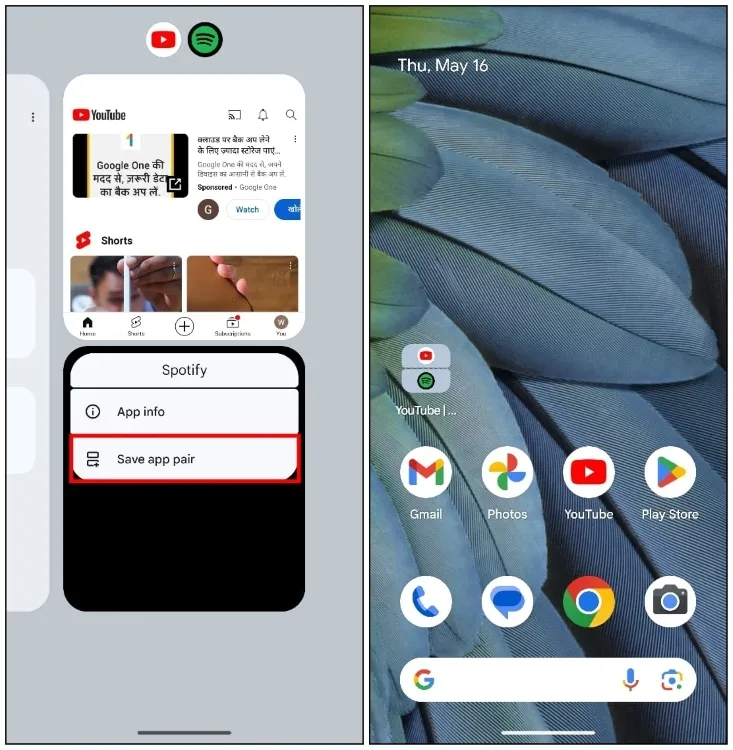
Previously, this feature was available on Samsung and other foldables, and its inclusion in Android is a welcome advancement.
6. Continue Using Apps on Fold
It’s quite surprising that the Pixel Fold lacked a crucial foldable feature, which involves the ability to shift and resume apps on the outer display when the device is folded.
Android expert Mishaal Rahman first identified this feature in Android 14 QPR1 Beta 1 but it was not discussed until the Android 15 DP1 stage.
Here’s a first look at the new “swipe up to continue”feature coming to the Pixel Fold! Android 15 DP1 brought back the “continue using apps on fold”setting that lets you choose when to transition apps from the inner screen to the cover screen after folding your phone. DP1 by… pic.twitter.com/pHx0lO8TqG— Mishaal Rahman (@MishaalRahman) February 16, 2024
There’s also a “Swipe up to continue” feature under development for the Pixel Fold, which will allow users to continue from where they left off by swiping up on the front screen after folding the device.
However, Pixel Fold users will need to wait longer for this functionality as it remains uncertain if it will be available in the next feature drop or in the Android 15 stable version.
7. Bluetooth Quick Setting Tile
One notable improvement to the Bluetooth Quick Settings on Pixel devices is the addition of a pop-out menu, similar to that found in Wi-Fi Quick Settings. This feature was initially introduced in Android 14 QPR 3 Beta 1.
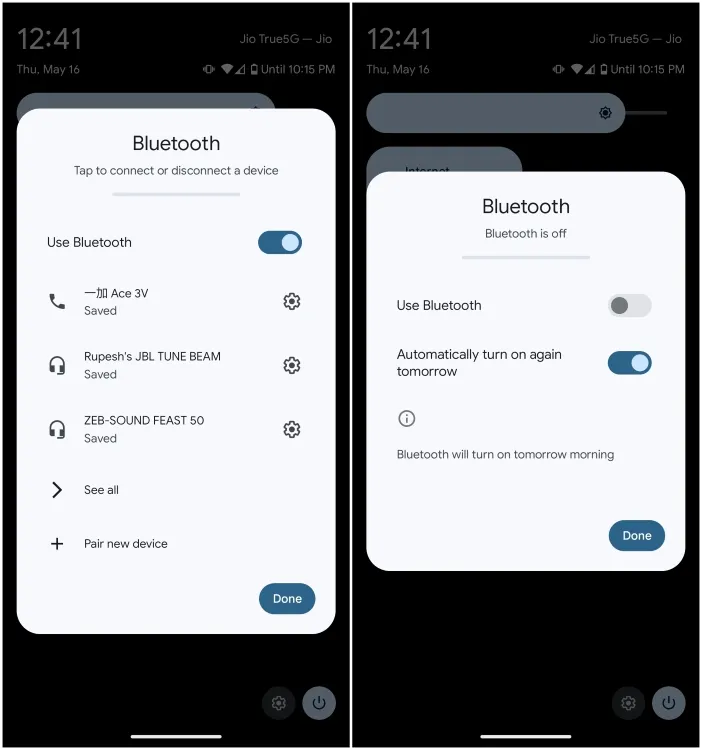
8. New Volume Panel
The expanded volume panel has undergone a design overhaul. It now features thicker, more pronounced sliders arranged horizontally, making them easier to access and read. Additionally, you can jump to settings or change the audio source directly from this panel.
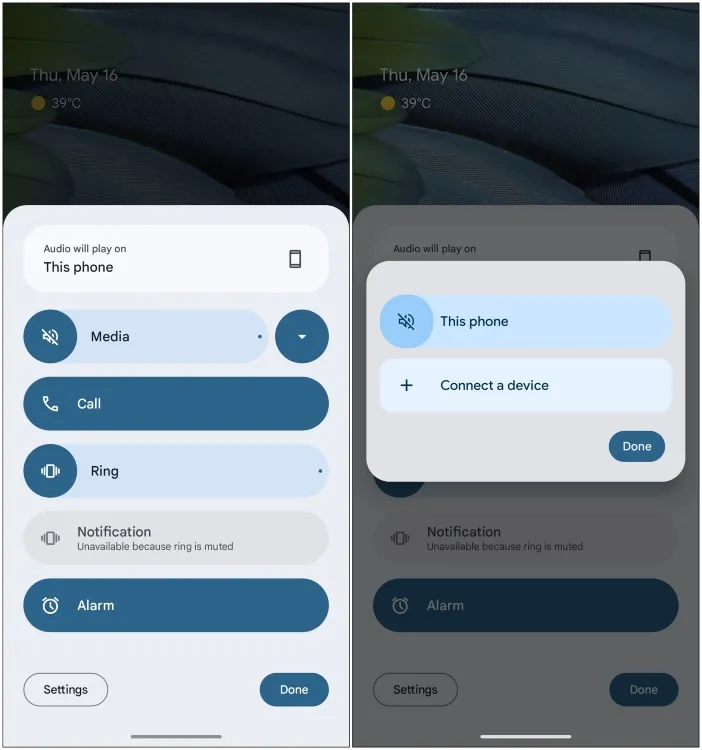
9. Screen Record a Single App
This is not entirely new, as it was technically a feature in Android 14, added in Android 14 QPR3 Beta 1, but it’s officially included in Android 15.
Previously, screen recording captured the entire screen, often revealing unnecessary information. The new “A single app” option in the screen recording menu allows you to record only the desired app.
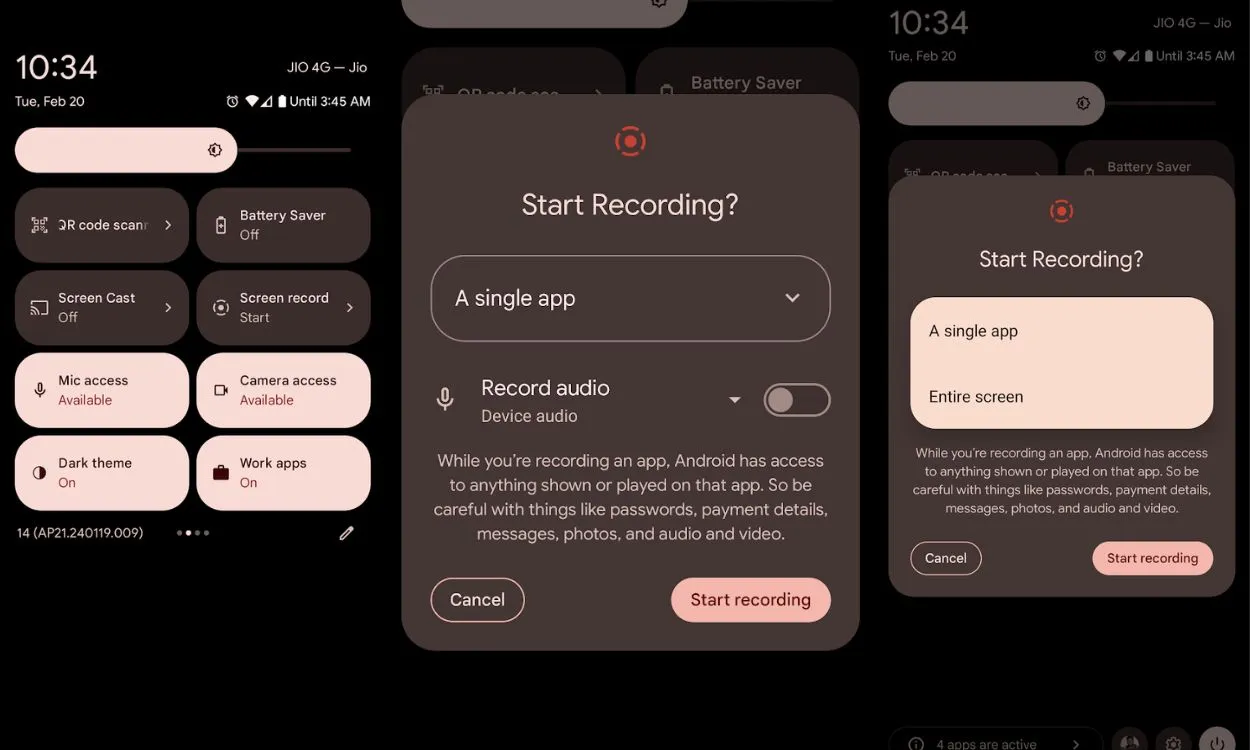
For those wondering what occurs if you switch apps, the feature will continue to record as long as the selected app remains active in recent apps. Removing the app from the multitasking view will stop the recording.
10. Screen Recording Detection
A new privacy feature in Android 15 introduces Screen Recording detection. This functionality will alert apps if screen recording is active, enabling them to take appropriate measures to protect user privacy. For instance, banking apps may choose to block screen recording functionality.
Additionally, Android 15 will mask sensitive data such as message OTPs, usernames, credentials, and credit card information when screen sharing is active, preventing the leakage of personal information.
11. New Easter Egg
If you’re a fan of Easter eggs, you might already know that Android 15 has the codename Vanilla Ice Cream internally. Each OS release typically comes with a new version-specific Easter egg; Android 15 features a reimagined version of Android 14’s Easter egg, flipped vertically to represent a ‘V’. The Upside Down Cake from the previous version has been turned upside down.

12. App Archiving
App Archiving is a feature closely resembling the offloading functionality seen in iOS. It has been in Android’s code for a while and has now been activated in Android 15 Developer Preview 2. This feature helps reduce an app’s storage footprint while preserving your login session and critical data.
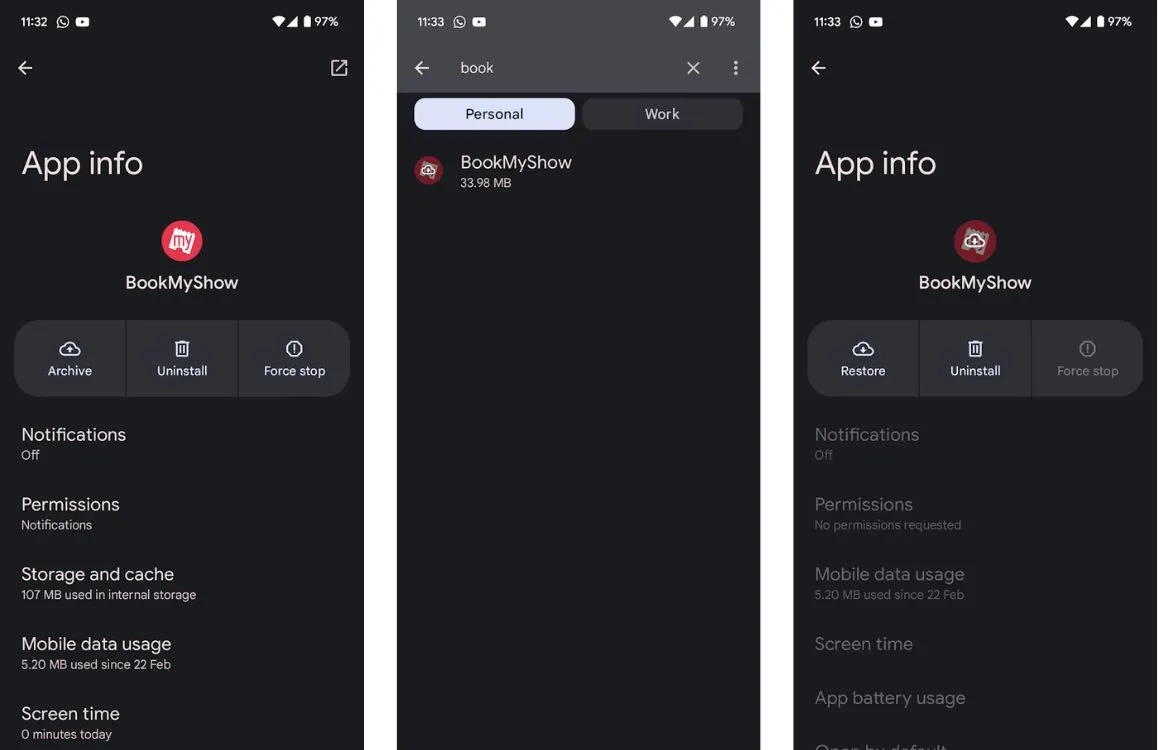
During testing, we archived an app that initially took up 107 MB of space, which was then reduced to approximately 34 MB. After archiving, the app will still appear in the launcher; tapping it will allow you to restore it. You can also restore it through the app’s page in settings.
13. Audio Sharing
Introduced in Android 15 Developer Preview 2, the “Audio Sharing” feature can be found in the Connected Devices section of Settings. This feature will enable the connection of multiple Bluetooth headphones that support LE audio, allowing for simultaneous audio playback across multiple Bluetooth devices.

This feature is currently non-functional, and the toggle turns off as soon as you exit the settings page. We look forward to seeing it fully operational in the stable release of Android 15.
14. HD Video in “Device as Webcam” Feature

Recent Android 14 QPR updates added webcam functionality to Android devices, allowing users to utilize their cameras for streaming. While initially limited to 720p video quality, Android 15 DP introduces an “HQ” icon enabling higher quality video usage from your device’s camera.
15. New Health Connect Features
Health Connect helps fitness apps to seamlessly sync various datasets, reducing the need for manual data entry across different applications for users. Android 15 expands on the Android Health Module, supporting additional data types in Health Connect, including Fitness and Nutrition.
16. Default Wallet app

A new option in settings allows users to set their preferred Default wallet app. On Pixel devices, the default is Google Wallet; however, currently, not many apps support being set as default wallet apps.
17. Better Wi-Fi Network Privacy
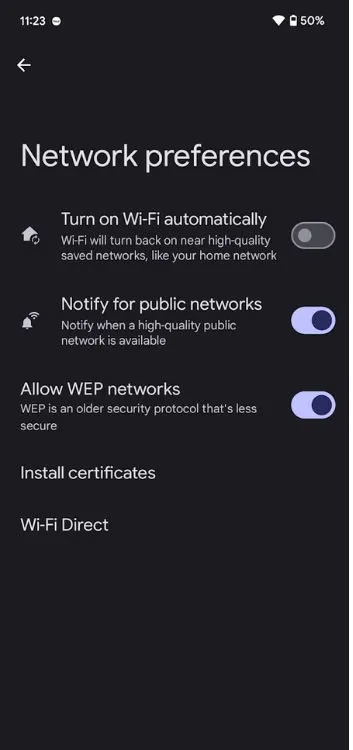
In Android 15 Beta 1, users can find a new WEP network toggle in network settings, complete with a warning regarding its older security protocol. Additionally, there’s now a privacy option in Wi-Fi settings, allowing users to choose between Use randomized MAC or Use device MAC, along with the option to send the device’s name over the network.
18. New Cellular Network Security Options
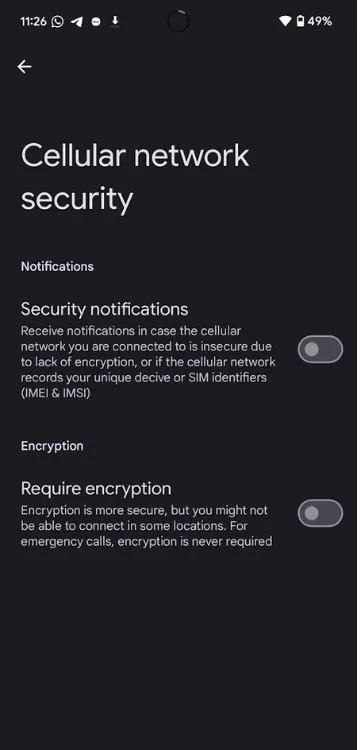
Android 15 includes two new toggles in Security settings: one offers Security notifications when your cellular network is unsecured or if your IMEI is recorded, while the other requires encryption.
19. Rich Widget Previews and Categories
With Android 15, widgets will now feature generated previews, providing a glimpse of their appearance with the relevant content from your device. For instance, a gallery widget can display actual photos instead of placeholders on the Widget Page.
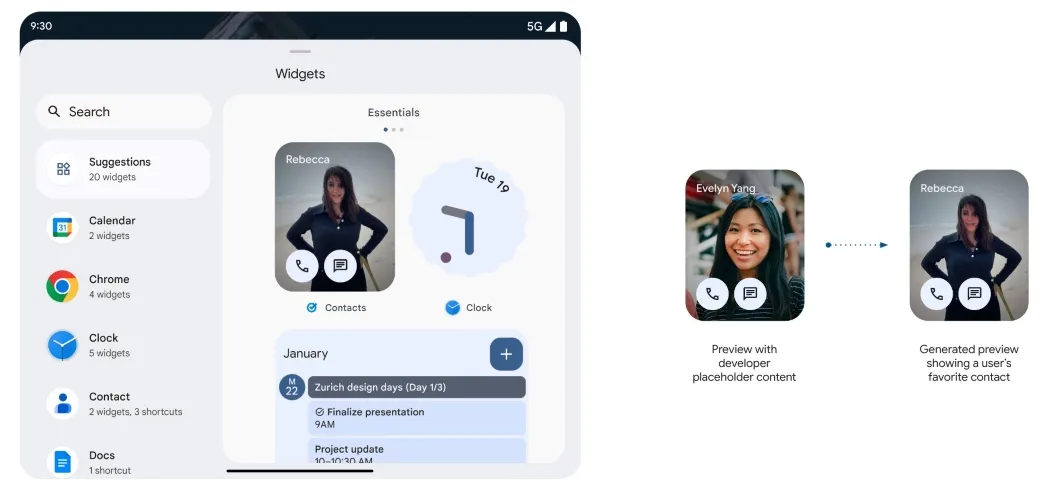
The Widgets Page will also suggest various widgets categorized into Essentials, Social, and Entertainment, making it easier to navigate and select the necessary widgets.
20. Satellite Message Connectivity
Google is enhancing the satellite connectivity feature for Android, which now adds UI components for this functionality as well as support for SMS and MMS messaging. RCS messaging apps like Google Messages are expected to support this feature soon.
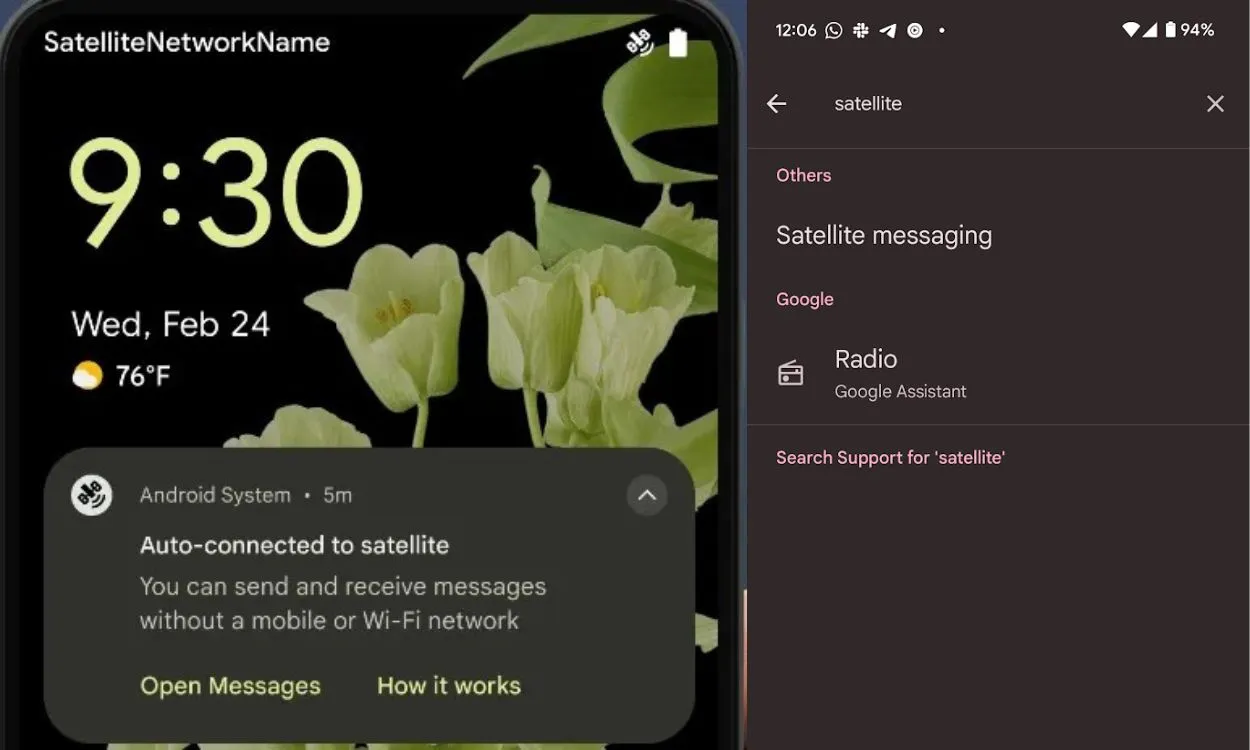
Other apps will also be more attuned to the implications of limited network services.
21. Predictive Back Gesture by Default
While not entirely new, the Predictive Back Gesture is now implemented by default in Android 15. In previous versions, this feature was only available under Developer options. The last Beta introduced an upgraded animation, allowing users to glimpse the previous page when swiping back.
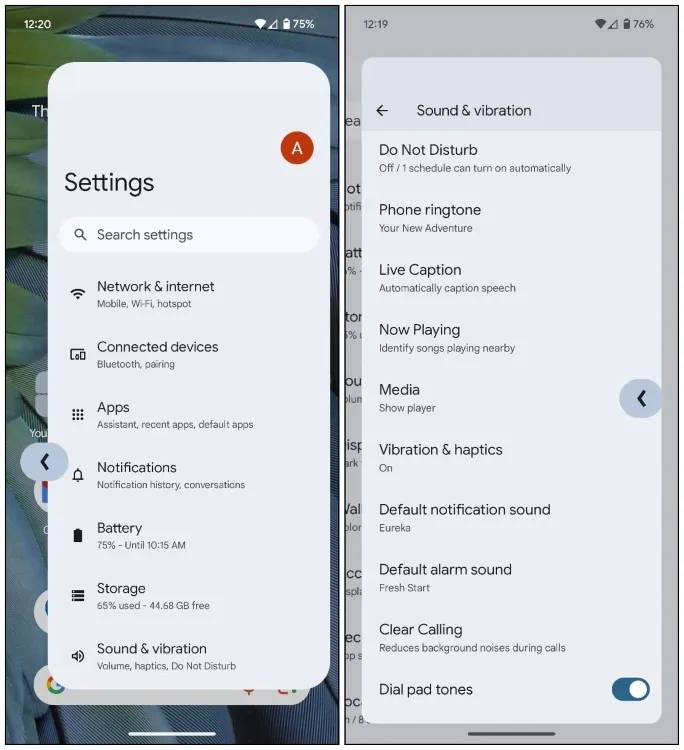
This minor addition enhances the overall user experience and is currently limited to Google apps, but we hope it extends to third-party applications following the Android 15 release.
22. Theft Detection
In an effort to enhance device security, Android 15 has introduced a Theft Detection feature. This feature can detect when your phone has potentially been stolen and automatically lock your device.

This system utilizes on-device sensors and algorithms to determine if your device has been snatched, locking it even if it was previously unlocked. This security measure provides a crucial buffer period for users to find their devices or erase sensitive data using Find My Device.
23. Better Passkey Management
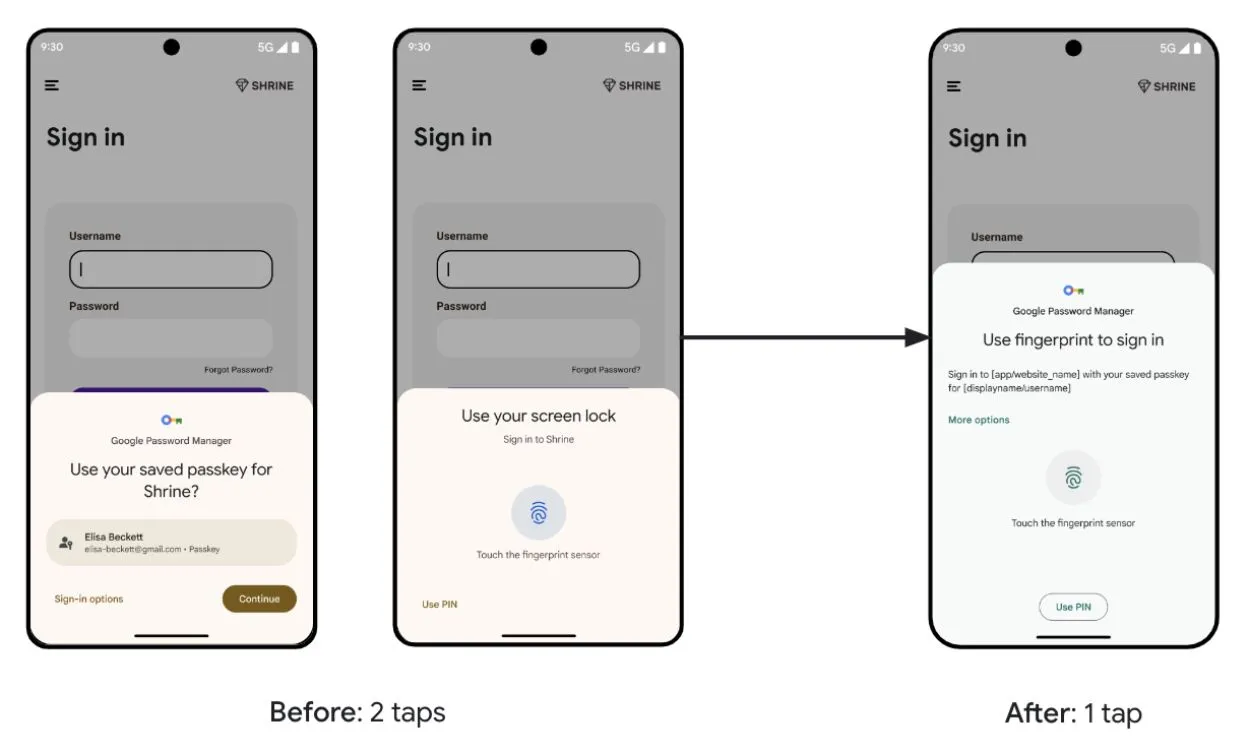
The process of signing in via Passkeys has become more streamlined in Android 15 Beta 3. Instead of interacting with two prompts, users now only need to deal with one. Additionally, if you mistakenly dismiss a passkey, it will still be available within Gboard and the credential manager.
24. Auto Turn On Bluetooth
This standalone feature is linked to the latest updates in Find My Network. Google has revamped the Find My Device experience, enabling users to accurately locate their device if it’s lost.

This feature, dependent on having Bluetooth enabled, will automatically turn Bluetooth back on if you had switched it off prior to misplacing your device.
25. Color Contrast Levels
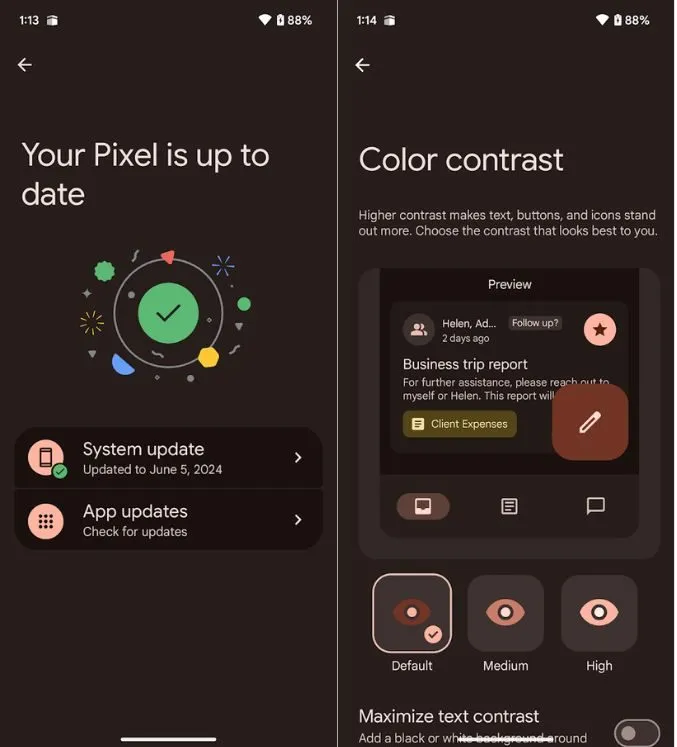
Android 15 Beta 3 introduces a new feature for adjusting color contrast levels with three options: Default, Medium, and High. This feature aims to enhance accessibility and usability for navigating the user interface.
26. Adaptive Timeout
The Adaptive Timeout feature in Screen Timeout settings is designed to help the device turn off the screen more quickly using the proximity sensor. If the device is unintentionally placed in a pocket with the screen on, it will automatically shorten the timeout. Currently, this feature is exclusively available on the Pixel 8 series.
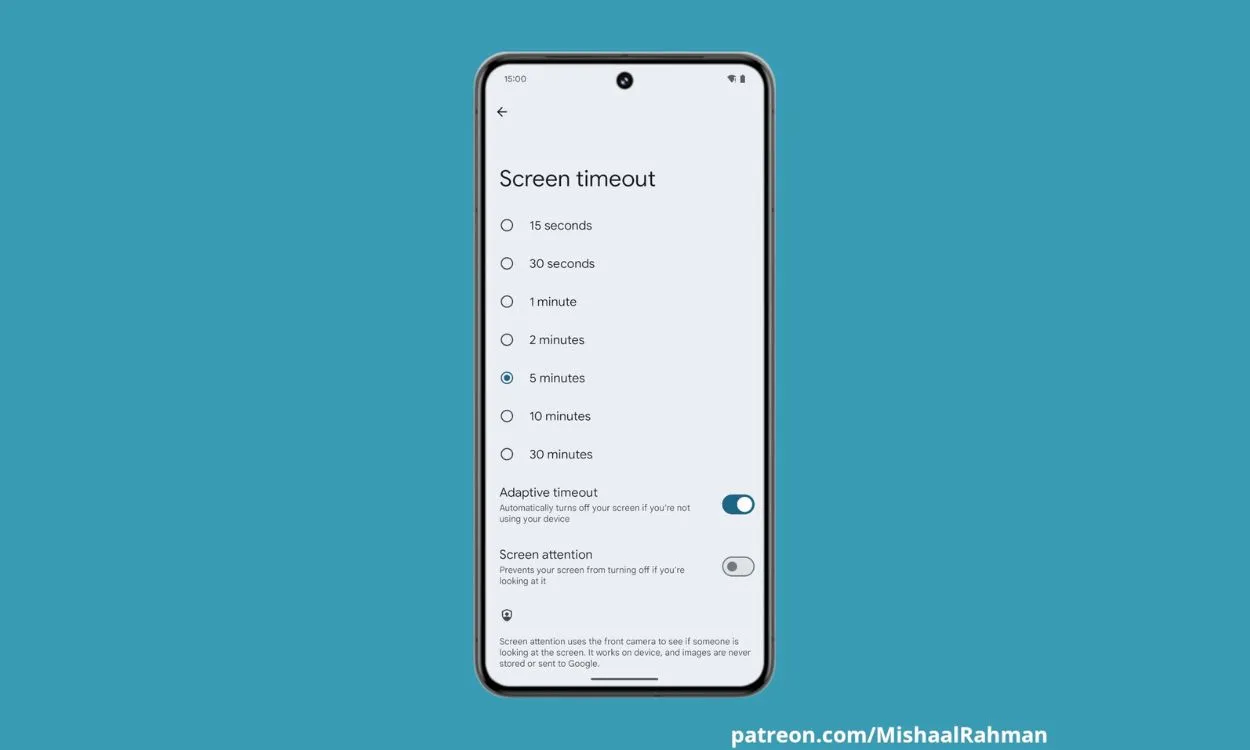
Given that all modern Android devices are equipped with proximity sensors, this feature is expected to roll out to a broader range of devices in the future.
27. Better Factory Reset Protection
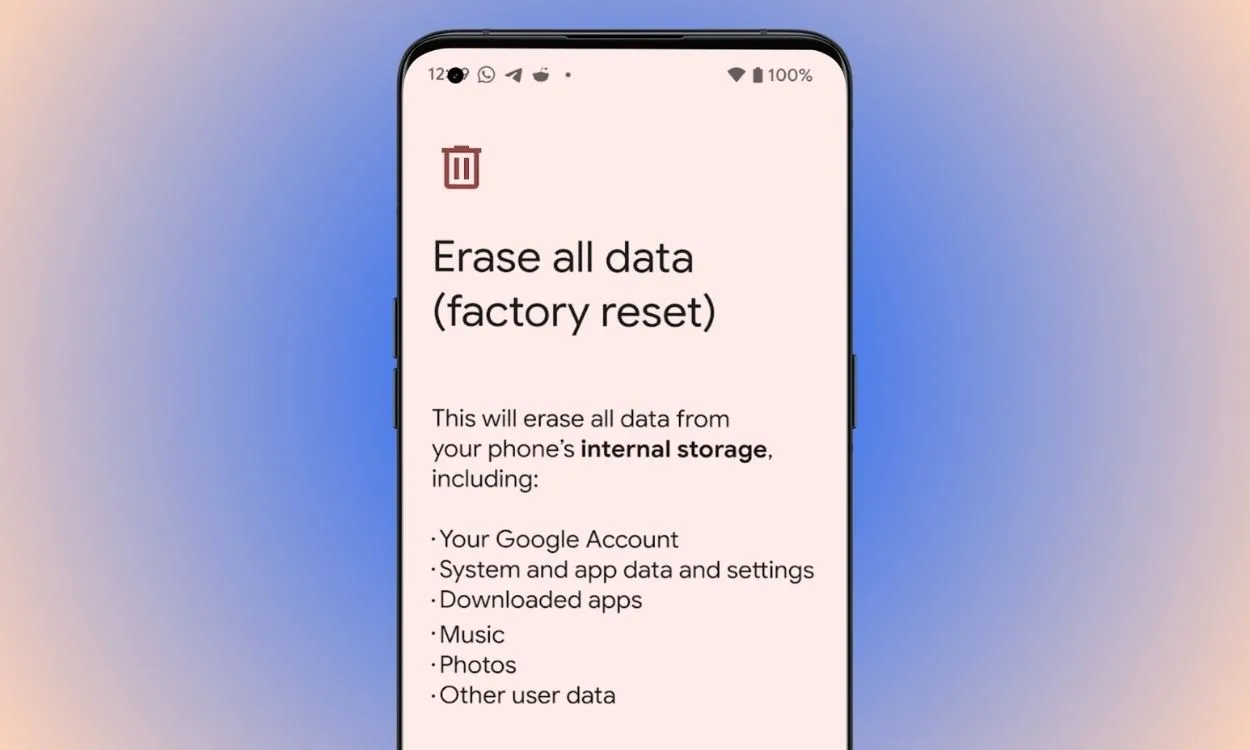
Android 15 enhances Factory Reset Protection, improving security for devices that may be stolen. With these updates, previous loopholes that allowed thieves to bypass Android’s setup process after a factory reset have been addressed. Devices will now require you to log in with the same Google account associated with the device when reset.
28. Revamped Settings App
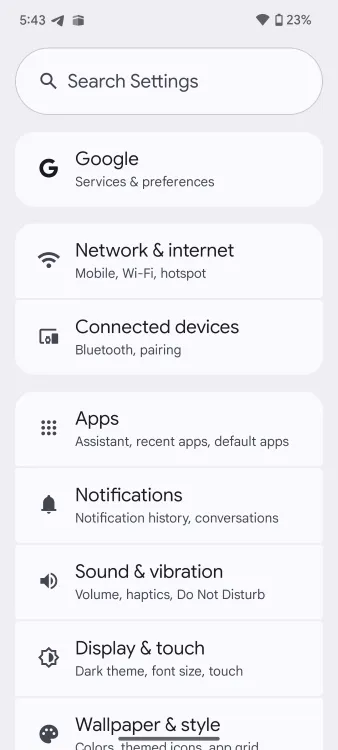
The Settings app is receiving a significant overhaul, with further segmentation. The new layout prioritizes Google settings at the top, followed by wireless networks, device settings, apps, sounds and styles, system elements, and security settings.
29. Better Quick Settings Layout in Landscape
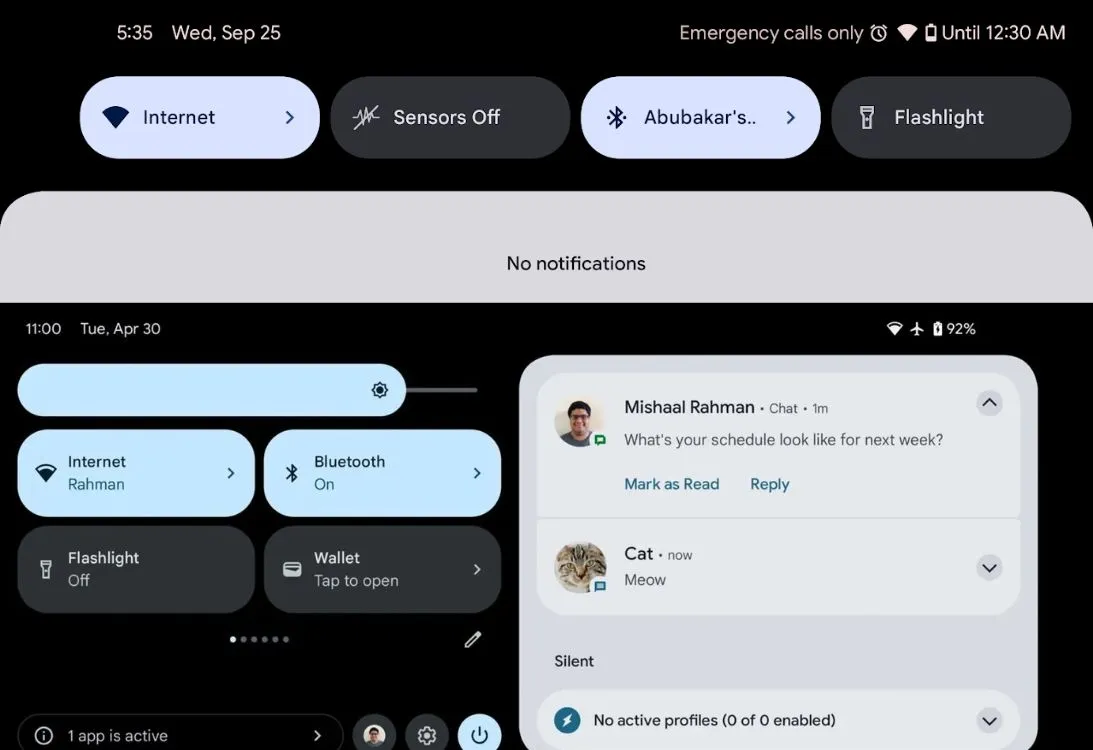
The Quick Settings layout in landscape mode is now optimized to display both tiles and notifications side-by-side, eliminating the need to scroll between them as was required in previous versions.
30. Component Health
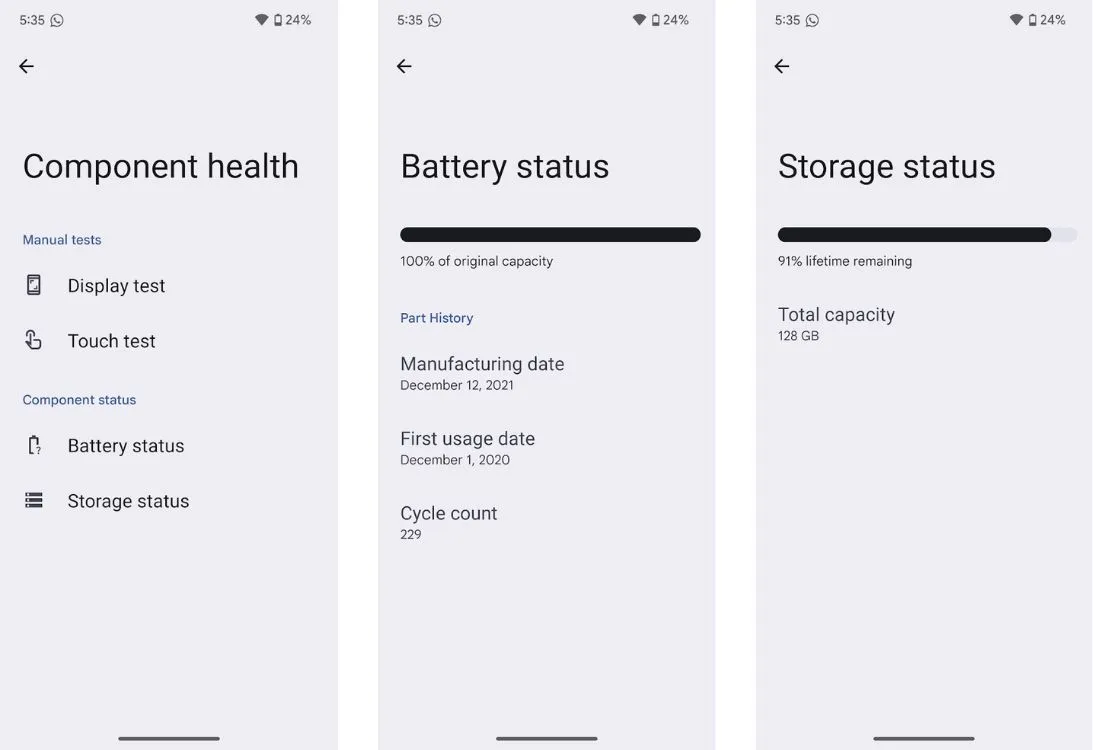
As indicated by its name, Android 15 allows you to check the health status of various components, such as storage and battery, in the Device Diagnostics activity. You can also test the display and touch responsiveness, offering convenience if you’re considering a used or refurbished device.
31. Lockscreen Widgets
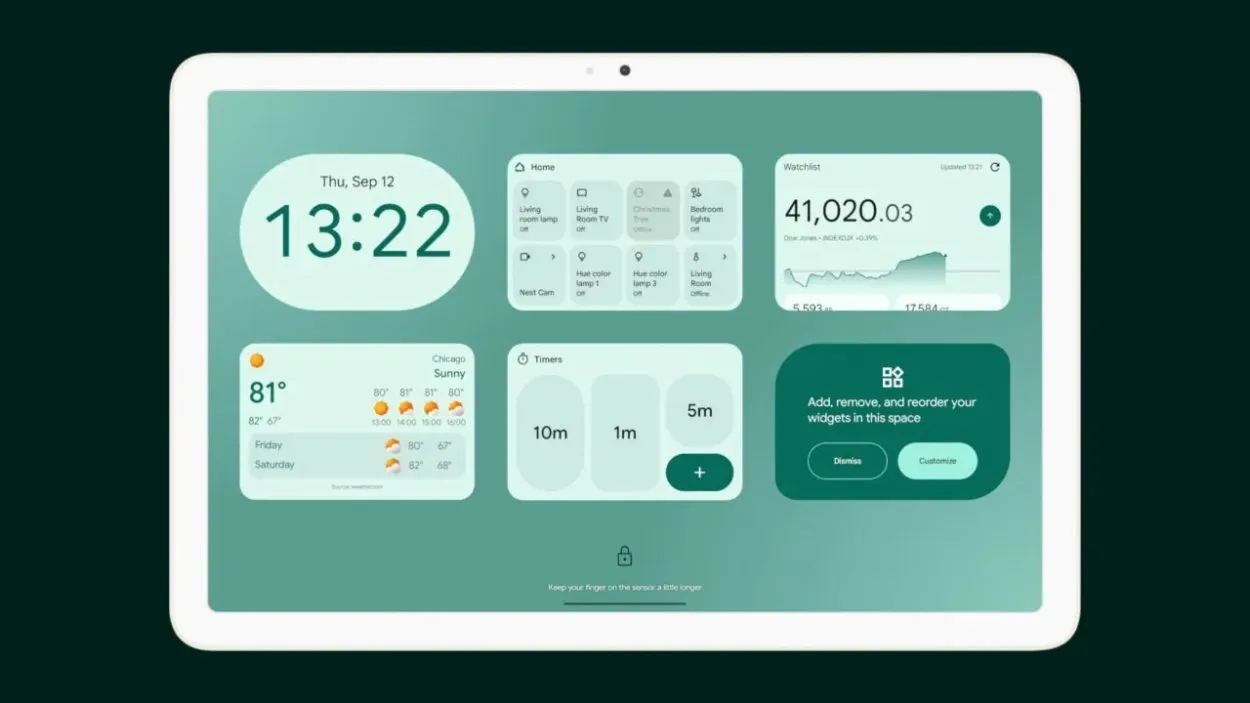
Lock screen widgets were introduced for the Pixel Tablet with the Android 15 QPR1 Beta update. Although they will soon be available for tablets, their availability on smartphones remains uncertain.
With additional updates and improvements anticipated, Android 15 is set to be a richly packed release. We’ve also included several features in our Android 15 wishlist. If you have suggestions for new functionalities that Google should consider, feel free to share your thoughts in the comments below.




Leave a Reply